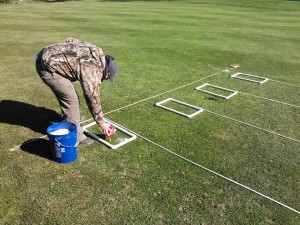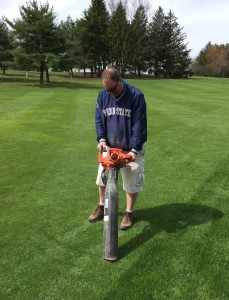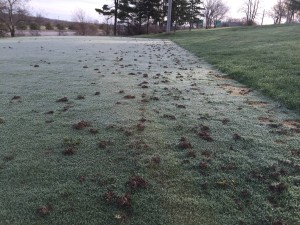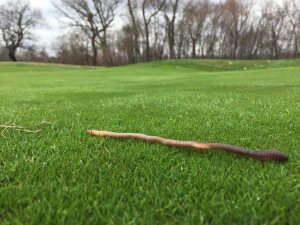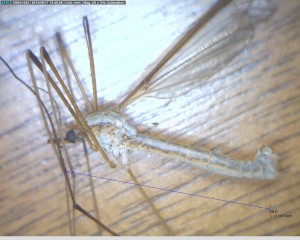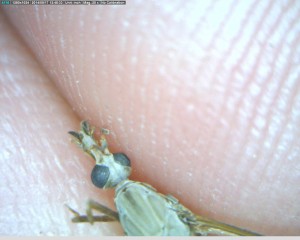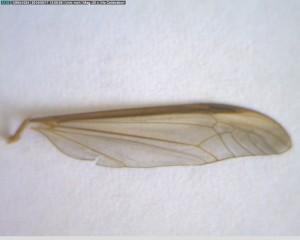Wow- what happened to the summer! It has been a crazy ride since the last blog post. I didn’t mean to go 3 months in between blog entries! (then again, not sure if people read this!)
To play catch up, here is a run-down of some of the projects we have been working on in the McGraw Lab and some notable observations from the summer:
Effects of Cultural Practices on Annual Bluegrass Weevil :
My Masters student, Ben Czyzewski, had a busy summer collecting lots of data on the effects of mowing heights and N fertility on the ability and preference of ABW to oviposit into putting green turf. Studies have not been conducted on putting greens before, given that this type of work requires destructive sampling. However, these areas receive the greatest amount of chemical inputs. Ben’s work will help us determine probability of the insect to survive low mowing heights, the preference for different fertility levels, and how ABW develops in each. We hope to use this information to develop Best Management Practices for ABW. Look for Ben to share his finding on the turf talk circuit this fall and winter.

Can wetting agents improve persistence of entomopathogenic (insect parasitic) nematodes?
EPNs can be extremely effective alternatives to chemical insecticides for numerous turfgrass pests. However, their ability to persist in densities capable of reliably reducing pests like ABW, can be limited in turf settings due to the lower soil moisture needed to maintain optimal playing conditions. We have been experimenting two species of EPNs (Heterorhabditis bacteriophora and Steinernema carpocapsae), and two turf/soil conditions (short cut bentgrass on sand rootzones, rough-height turf on soil) to examine if wetting agents can slow the rapid decay of EPNs after release and improve the uniformity of EPNs in soils over time.
Baculoviruses of Caterpillar Pests
We have been examining the effects of naturally-occurring baculoviruses (BV) on our major caterpillar pests in as part of a collaboration with Auburn University (Dr. David Held) and Univ. of Wisconsin (Dr. Chris Williamson). Baculoviruses commonly infect invertebrates (especially caterpillars), and are incapable of infecting mammals. Therefore, they have potential as a biopesticide of some of our foliage feeding pests. Our lab examined the effects of BV applications on Fall Armyworm (our collaborators are examining the effects on tropical sodwebworm and black cutworms). We have examined the impact that spraying BV occlusion bodies have on caterpillar mortality and development. Results generated from these studies will aid in determining the feasibility of long-term control of some of turf caterpillars.
Carl-the-ABW Sniffing Dog
Our most unusual and yet rewarding experiment of the year has to go to the work we have been doing with Scentworks: using canines to detect the presence of ABW in turf. We have received a lot of inquiries about how this research is going. Carl -is a 4 year old beagle that has been trained by Bun Montgomery (Scentworks) and Jason Webeck (Good Night, Sleep Tight). Canines have been working in the scent detection of bed bugs for many years. The group is looking to take the information that they have gained in that field and apply it to the early detection of ABW in areas where the pest is not currently located or determining the presence/absence of ABW around a property with known infestations. The initial results from two blind trials (involving hiding containers of ABW in the turf) have been very encouraging. We look forward to seeing where this project will go. I will be giving a presentation with Bun at the Eastern PA Turf Conference in January. Here is a video of Carl in action (the sitting action is him alerting to a hidden vial of ABW): IMG_4312
ODD OBSERVATIONS
BTA on Athletic Fields
I performed a house call on a baseball field that was suffering from dead Poa annua in Early July. The damage first appeared in the outfield, closest to the woodline, and moved in over time. The manager thought he had the first case of ABW on an athletic field. With much sampling we found larvae with legs! It was too early for our traditional, annual white grubs to be present. With the help of a microscope I was able to see that they were Black Turfgrass Ataenius. This was my first case of BTA on athletic fields. Normally they are problems in golf turf (bentgrass and Poa at fairway height). Ironically, I received another report of the same problem later in the week.
European crane fly in central PA
I am never off the job! I detected a crane fly adult while playing golf in mid July. I captured the adult and brought it back to the lab. There are potentially thousands of crane flies that could be in the golf course environment, but only 2 worldwide that damage turf. Both are native to Europe. I sent pictures of the sample off for another set of eyes to look at it, which was confirmed to be Tipula oleracea, the common crane fly (As far as the 2 exotics are concerned, this is the lesser of the two evils). The timing of the flight was odd, though they have the potential to occur in small numbers throughout of the summer. I am not overly concerned at the moment – we will keep an eye on the situation and monitor for flights during the fall (Sept-October) and again next spring (April-May).








